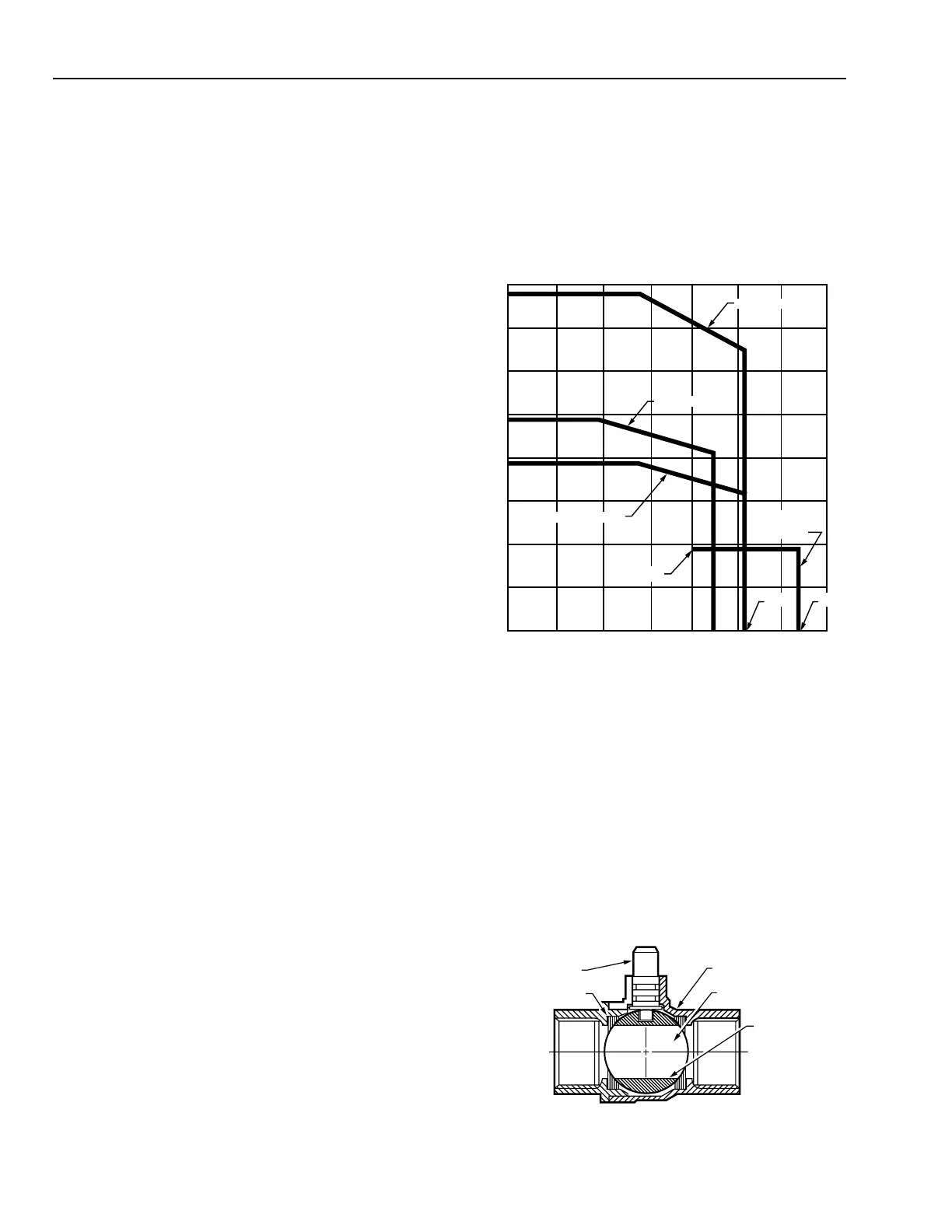ENGINEERING MANUAL OF AUTOMATIC CONTROL
VALVE SELECTION AND SIZING
430
STEM
BALL
BODY
PORT
SEATS
M12228
The valve close-off rating is independent of the actual
valve body rating. See definition of BODY RATING
(ACTUAL) in this section.
Close-off rating of three-way valves: The maximum pressure
difference between either of the two inlet ports and
the outlet port for mixing valves, or the pressure
difference between the inlet port and either of the two
outlet ports for diverting valves.
Critical pressure drop: See Pressure drop (critical).
Pressure drop: The difference in upstream and downstream
pressures of the fluid flowing through the valve.
Pressure drop (critical): The flow of a gaseous controlled fluid
through the valve increases as the pressure drop
increases until reaching a critical point. This is the
critical pressure drop.
Any increase in pressure drop beyond the critical
pressure drop is dissipated as noise and cavitation
rather than increasing flow. The noise and cavitation
can destroy the valve and adjacent piping components.
Body rating (nominal): The theoretical pressure rating,
expressed in kPa, of the valve body exclusive of
packing, disc, etc. The nominal rating is often cast on
the valve body and provides a way to classify the valve
by pressure. A valve of specified body material and
nominal body rating often has characteristics such as
pressure-temperature ratings, wall thickness, and end
connections which are determined by a society such
as ANSI (American National Standards Institute).
Figure 2 shows ANSI pressure-temperature ratings for
valves. Note that the nominal body rating is not the
same as the actual body rating.
Body rating (actual): The correlation between safe, permissible
flowing fluid pressure and flowing fluid temperature
of the valve body (exclusive of the packing, disc, etc.).
The nominal valve body rating is the permissible
pressure at a specific temperature.
EXAMPLE:
A cast-iron, screwed-end valve with a
nominal rating of 850 kPa could have an
actual rating of 850 kPa at 180°C and
1200 kPA at 65°C.
Maximum pressure and temperature: The maximum
pressure and temperature limitations of fluid flow that
a valve can withstand. These ratings may be due to
valve packing, body, or disc material or actuator
limitations. The actual valve body ratings are
exclusively for the valve body and the maximum
pressure and temperature ratings are for the complete
valve (body and trim). Note that the maximum pressure
and temperature ratings may be less than the actual
valve body ratings.
EXAMPLE:
The body of a valve, exclusive of packing,
disc, etc., has a pressure and temperature
rating of 850 kPa at 180°C. If the valve
contains a composition disc that can
withstand a temperature of only 115°C,
then the temperature limit of the disc
becomes the maximum temperature rating
for the valve.
Fig. 2. ANSI Pressure-Temperature Ratings for Valves.
VALVE TYPES
Ball valve: A ball valve has a precision ball between two seats
within a body (Fig. 3). Ball valves have several port
sizes for a give body size and go from closed to open
with a 90 degree turn of the stem. They are available
in both two-way and three-way configurations. For
HVAC applications, ball valve construction includes
brass and cast iron bodies; stainless steel, chrome
plated brass, and cast iron balls; resilient seats with
various temperature ratings.
Fig. 3. Ball Valve.
0
350
700
1050
1400
1750
2100
LINE PRESSURE (kPa)
2450
2800
C4366
-20 10 40 70 100 130 160 190
ANSI CLASS 250
ANSI CLASS 150
ANSI CLASS 125
ANSI CLASS 150
(STEAM)
100
˚
C
135
˚
C
170
˚
C
FLUID TEMPERATURE (˚C)

